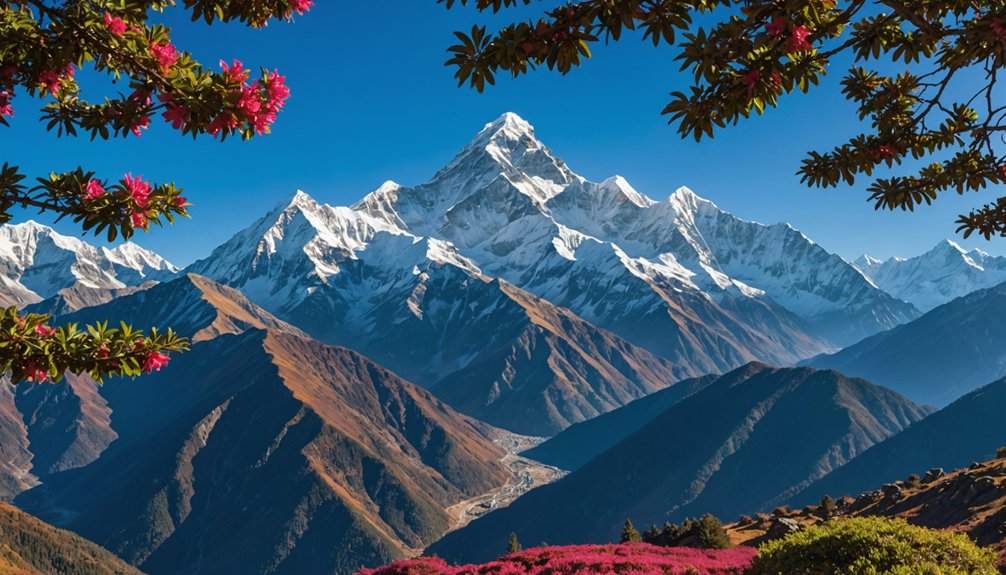October to December is your prime window to experience Nepal at its finest, with crystal-clear mountain views and perfect temperatures between 15-26°C in Kathmandu Valley. You’ll enjoy minimal rainfall and pristine trekking conditions, though expect peak season crowds and rates 20-30% higher than off-peak. While spring offers blooming rhododendrons and winter promises solitude, autumn’s stable weather and panoramic Himalayan vistas make it unbeatable. Discover how each season reveals Nepal’s unique treasures.
Key Takeaways
- October to December is Nepal’s peak season with ideal 15-26°C temperatures and crystal-clear mountain views.
- Spring (March-April) offers blooming rhododendrons, perfect trekking conditions, and reduced altitude sickness risks on Everest trails.
- Avoid June to September due to monsoon rains, unless visiting rain-shadow regions like Mustang or seeking wildlife in Chitwan.
- December to February provides clear Himalayan views with fewer crowds but requires proper cold-weather gear above 3,000m.
- Book peak season travel 3-6 months ahead, as accommodation costs rise 20-30% and flights to Lukla/Pokhara fill quickly.
Peak Season Travel: October to December
While many destinations have debatable peak seasons, Nepal’s prime time for travel falls decisively between October and December. You’ll experience ideal weather conditions, with temperatures ranging from 15°C to 26°C in Kathmandu and crystal-clear mountain views thanks to minimal rainfall of 51-59mm. October stands out as the best month to explore Nepal’s diverse landscapes and culture.
Be prepared for the surge in tourism during these months. Accommodation costs jump 20-30% above off-peak rates, and guide/porter availability becomes scarce. You’ll need to book flights to Lukla and Pokhara 3-6 months ahead. However, these challenges come with rewards: snow-free high passes, perfect trekking conditions on the Everest and Annapurna circuits, and vibrant cultural festivities. You’ll witness Dashain and Tihar celebrations, though expect 7-10 day business closures in Kathmandu during these festivals. The Terai region stays warm at 31°C, suitable for wildlife encounters, while higher altitudes like Everest Base Camp cool to 13°C during day and -5°C at night.
Spring Adventures: March to April
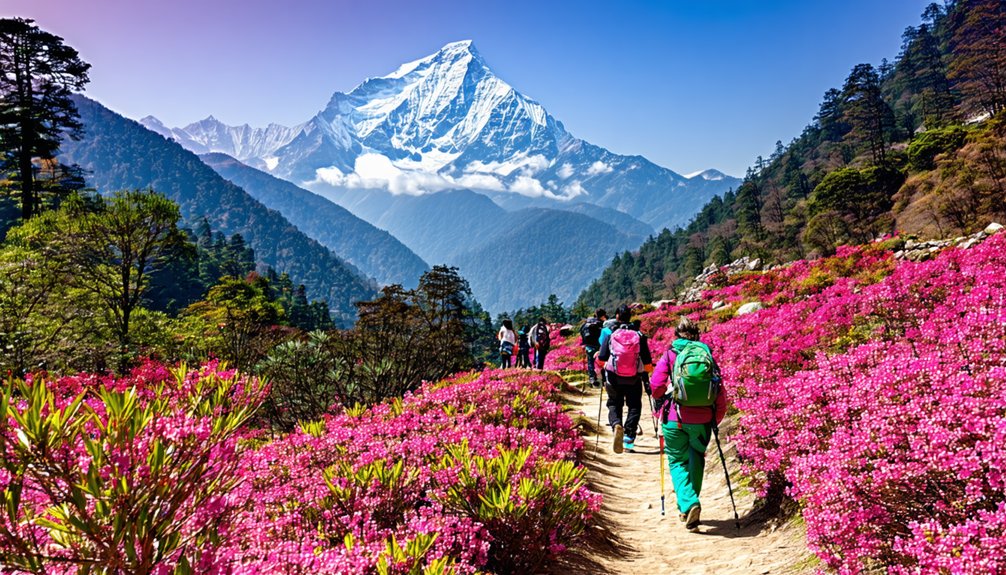
As winter’s grip loosens across Nepal, March and April usher in a spectacular spring season marked by blooming rhododendron forests and ideal trekking conditions. You’ll find pleasant temperatures ranging from 23-32°C in Kathmandu Valley, while higher elevations maintain invigorating coolness perfect for outdoor adventures. With more accessible trails now that snow has melted at lower elevations, spring adventures become increasingly enticing.
The Annapurna Circuit and Everest Base Camp trails come alive with vibrant red and pink rhododendrons between 2,000-3,500m. You’ll enjoy clear skies with 70-80% visibility, making those mountain photographs truly spectacular. As expedition preparations buzz at Everest Base Camp, you can explore trails with reduced altitude sickness risks.
Don’t miss the cultural festivities, from the colorful chaos of Holi to Bisket Jatra’s chariot processions. For wildlife enthusiasts, Chitwan and Bardia National Parks offer exceptional safari opportunities with 80-90% success rates for spotting tigers and rhinos in comfortable 25-30°C weather. Book early, though – lodge occupancy rises 15-20% during this popular season.
Monsoon Experience: June to September

Nepal’s vibrant spring transforms dramatically when the monsoon season arrives in mid-June. You’ll find afternoon downpours delivering 80% of the country’s annual rainfall, with the heaviest precipitation in July. While this might limit some activities, you’ll discover unique advantages during these less-crowded months.
The monsoon creates outstanding scenic photography conditions with misty mountains, lush landscapes, and dramatic cloud formations. Wildlife viewing opportunities in Chitwan National Park showcase vibrant vegetation, though some safari routes may be limited by flooding. If you’re seeking drier conditions, head to rain-shadow regions like Mustang or Dolpo, where rainfall remains minimal.
You’ll benefit from significant hotel discounts and fewer tourists, but prepare for potential travel disruptions. Morning sightseeing in Kathmandu and Pokhara remains viable before typical afternoon storms. Consider weather-appropriate gear and flexible itineraries, as domestic flights often face cancellations and some teahouses close during this period. With current trends showing above-normal rains predicted for this season, travelers should plan accordingly.
Winter Discoveries: December to February
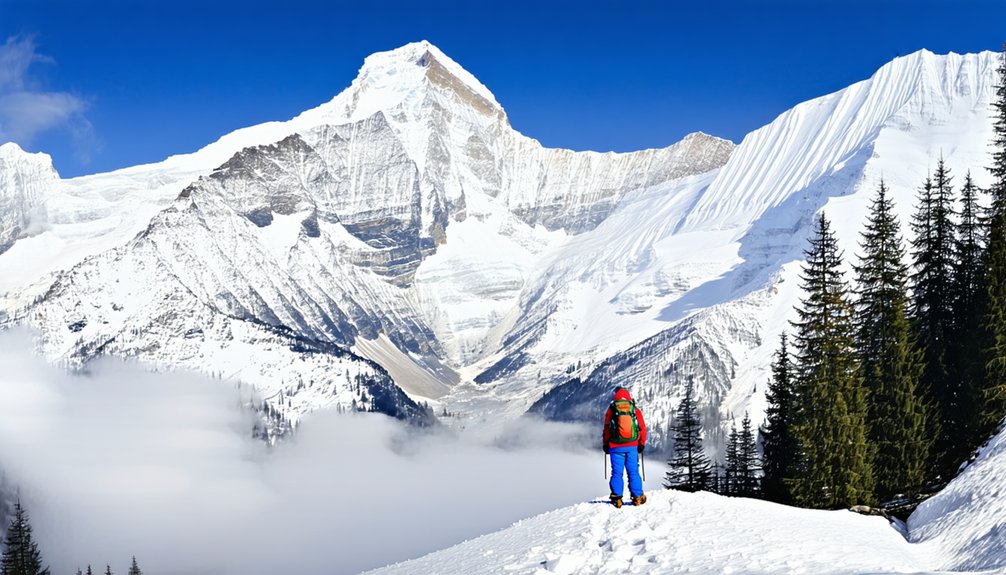
During Nepal’s winter months, you’ll discover a pristine wonderland where crystal-clear Himalayan views compensate for the season’s bitter cold. With fewer crowds on popular trails like Annapurna Circuit and Everest Base Camp, you’ll experience these legendary routes in peaceful solitude. Hotels in major cities provide AC heating systems for comfortable overnight stays.
The diverse winter activities span across Nepal’s distinct geographical zones. In the Himalayas, temperatures plunge between -10°C to 10°C, offering challenging yet rewarding high-altitude adventures above 3,000m where permanent snow creates dramatic landscapes. The hilly regions around Kathmandu and Pokhara present milder conditions, with daytime temperatures ranging from 4.5°C to 23°C, though nights can be quite chilly.
While the Tarai plains remain hazy with limited sunshine, the second half of February brings welcome warming trends. For unique winter experiences, catch rare snowfall views from Chandragiri or Kalinchowk, but pack appropriately – these pristine conditions demand proper cold-weather gear and careful planning.
Regional Weather Patterns and What to Expect
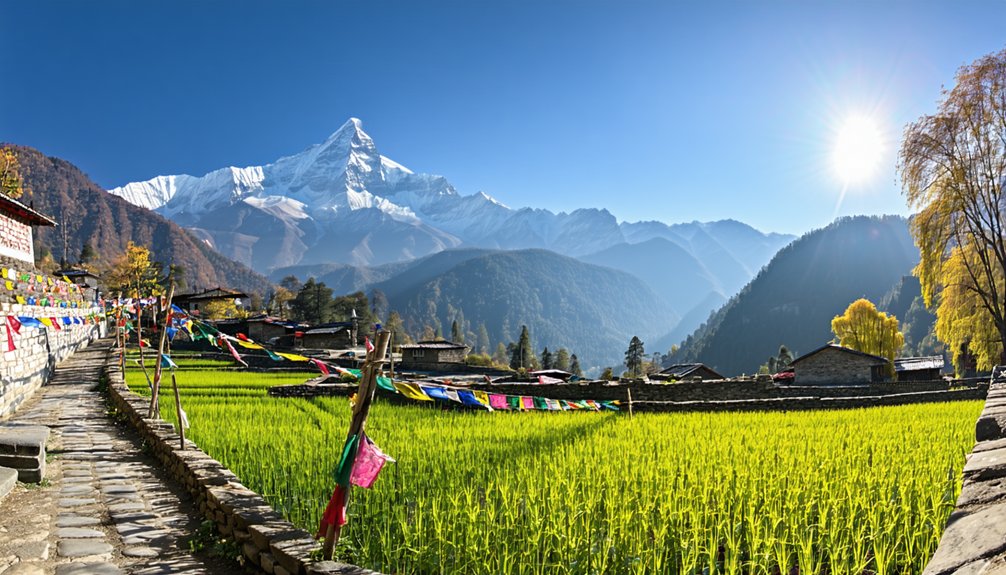
Understanding Nepal’s regional weather patterns is essential for planning your journey across its three distinct geographical zones. The northern Himalayas experience severe winters below zero, while summers remain cool at 15-20°C. Pre-monsoon trek planning in this region works best when you target areas below 5,000 meters, where permanent snow hasn’t taken hold.
The mid-hills offer more moderate conditions, with Kathmandu Valley’s temperatures ranging from 2-12°C in winter to 20-35°C in summer. Post-monsoon trek benefits peak in October-November, rewarding you with crystal-clear mountain views. Just watch for monsoon-triggered landslides between July and September.
In the Terai lowlands, you’ll encounter scorching pre-monsoon heat above 45°C from April to June. Summer brings relief with temperatures dropping to 33°C, though humidity soars. During this time, the region transforms into a vibrant green landscape teeming with diverse wildlife and blooming flora. Winter fog blankets the region from December to February, while monsoon floods pose risks in Chitwan and Biratnagar from June through September.
Cultural Festivals and Celebrations Year-Round
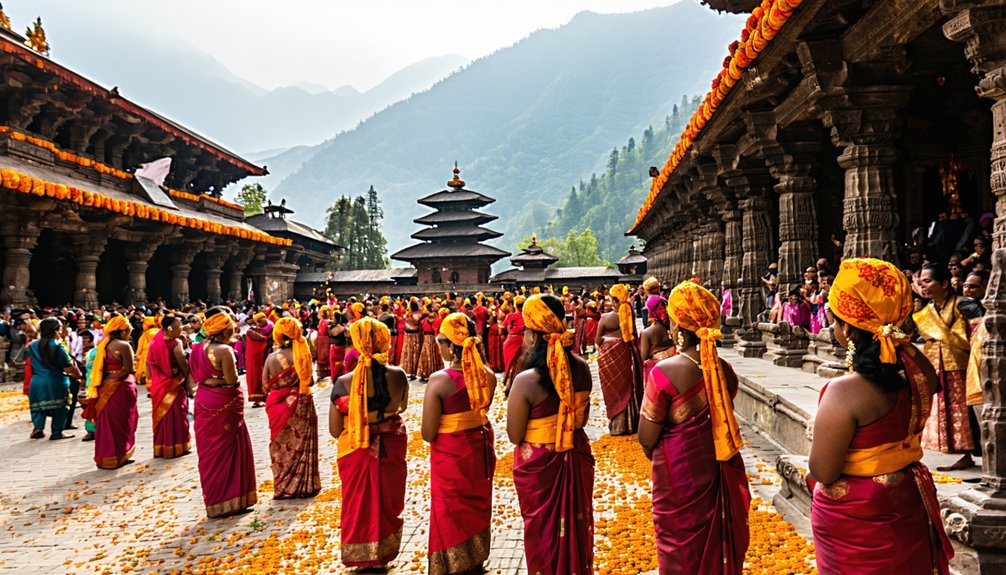
Throughout the year, you’ll discover Nepal’s vibrant cultural tapestry through its countless festivals that showcase the nation’s rich Hindu and Buddhist heritage. Major celebrations like the 15-day Dashain in September/October and the illuminating Tihar festival bring cities alive with traditional rituals and family gatherings.
Spring welcomes the colorful Holi celebrations, while summer brings unique seasonal rituals like Rato Machhindranath Jatra, with its massive chariot processions seeking monsoon blessings. Each ethnic community event adds distinct flavors to Nepal’s festival calendar – from the Newari Bisket Jatra marking the solar new year to the vibrant Teej celebrations where women don red attire and fast for marital harmony. Gai Jatra brings a solemn yet meaningful tradition where families who lost loved ones in the past year lead cows through the streets to commemorate the deceased.
In winter, you can experience the Tibetan Losar festivities in Himalayan regions, while autumn features the spectacular Indra Jatra in Kathmandu, where the living goddess Kumari makes her annual public appearance in an ornate chariot procession.

